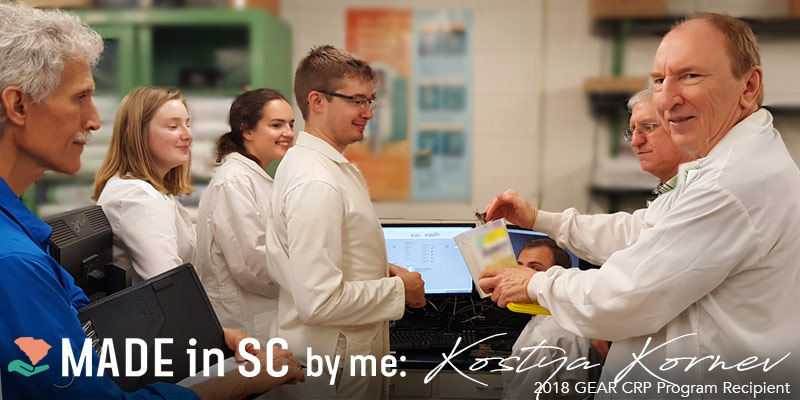GEAR CRP Program Focus On Dr. Kostantin Kornev
Nanomaterials for unveiling blood clotting
The mechanistic reaction of the clot is the first step in providing scaffolding for the formation of new tissue. The clot, therefore, requires special materials properties. The recently developed Magnetic Rotational Spectroscopy with magnetic nanorods, coupled with the surface analysis on nanoliter droplets of insect blood allows us to unveil the physical mechanisms of blood clotting in insects. We study clot nucleation and transformation of viscous blood into a visco-elastic aggregate which happens in a few minutes, which is hundreds of times faster than wound plugging and scab formation. Combined with biochemical and biomolecular studies, these discoveries can help design fast-working thickeners for vertebrate blood, including human blood, based on clotting principles of insect blood.
The goal of the GEAR CRP (Collaborative Research Program) is to encourage faculty researchers at the three South Carolina comprehensive research universities (CRUs), Clemson University, the Medical University of South Carolina, and the University of South Carolina; and predominately undergraduate institutions (PUIs) to build collaborative CRU/PUI academic research teams that will compete effectively for research funding. GEAR CRP grants build and enhance the network of scientists in the state that conduct research related to the National Science Foundation (NSF) Research Infrastructure Improvement (RII) Track 1-Award entitled, Materials Assembly and Design Excellence in South Carolina (MADE in SC).
Kornev, Clemson University, is a member of the MADE in SC Thrust 3 (Biomaterials) and the Lead PI on a project entitled, “The effect of physical and chemical signals on cellular behavior across multiple scales.” He collaborates on the project with Dr. Ekatrina Michonova from Erskine College.
May 9, 2019Return to GEAR and GEAR CRP Focus On Overview
